Introduction to the World of E-commerce and Its Importance

In today’s world, an online presence is essential for every business, and this necessity is more evident than ever in the realm of #sales and #e-commerce.
Designing an online store is no longer a luxury option, but rather a foundation for survival and growth in a competitive market.
This comprehensive guide explains and analyzes the various aspects of creating a successful online store.
From choosing the right platform to marketing and optimization strategies, everything you need for a powerful entry into this field will be covered.
The online market currently accounts for a significant portion of the global economy, and this share is expected to increase in the coming years.
This paradigm shift has provided unparalleled opportunities for businesses, both small and large, to offer their products and services to customers beyond geographical boundaries.
By investing properly in e-commerce website design, access to potential customers can be significantly expanded, and an unparalleled online shopping experience can be provided for them.
This not only helps increase sales but also leads to brand strengthening and customer loyalty.
The importance of creating an efficient and user-friendly online store can be examined from various perspectives, including reduced operational costs compared to physical stores, 24-hour operation, and unlimited access to the global target market.
This provides an educational and guiding opportunity for businesses to enter this field with full awareness.
Are you worried about losing customers because you don’t have a professional e-commerce website?
With e-commerce website design by Rasaweb, forget these worries!
✅ Significant increase in sales and visitor-to-customer conversion rate
✅ Professional and user-friendly design that builds customer trust
⚡ Get free consultation from Rasaweb
Initial Planning Stages for Your Online Store
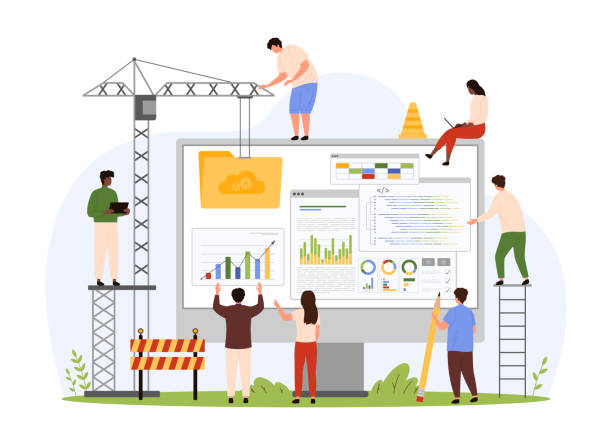
Before any action for designing an online store, detailed and well-documented planning is essential.
This stage provides essential guidance to ensure the success of your project and prevents potential problems in the future.
First, the main goal of launching the store must be determined: What products will you sell? Who is your target market? What competitive advantage do you have? A deep understanding of the audience and their needs is the cornerstone of a successful e-commerce website.
After that, market research to identify competitors and analyze their strategies is crucial.
This helps you understand your competitors’ strengths and weaknesses and discover new opportunities.
Also, you need to carefully design the product structure and categories so that users can easily find the products they are looking for.
A specialized approach at this stage involves creating a comprehensive roadmap for the project, including timelines, budgeting, and required resources.
This roadmap should outline various stages, including design, development, testing, and launching the online store.
Considering scalability and the ability to respond to future growth from the outset is very important.
Will your infrastructure be able to handle increased traffic and order volume? Answering these questions will help you choose the right technologies and platforms.
This part of the e-commerce website design process is a critical step that should not be overlooked and can determine the overall path to your success.
Finally, planning for initial marketing strategies and customer acquisition methods should also begin at this stage so that you can immediately start your activities after launch.
Choosing the Right Platform and Key Infrastructures

One of the most important decisions in the online store design process is choosing the right platform.
This choice will directly impact the store’s capabilities, ease of management, and your costs.
There are numerous platforms for building an online store, each with its own advantages and disadvantages.
Open-source platforms like WooCommerce and Magento offer high flexibility and extensive customization options, but require more technical knowledge for installation, configuration, and maintenance.
In contrast, SaaS (Software as a Service) platforms like Shopify and Wix are ready-to-use and user-friendly solutions that require little technical knowledge, and their maintenance is the responsibility of the service provider.
This specialized and explanatory section helps you carefully examine the available options.
In addition to the platform, choosing a reliable and efficient hosting (web hosting) is also crucial.
The hosting must be able to handle your website traffic, have high loading speed, and provide the necessary security for customer data and transactions.
Also, an SSL certificate is essential for transaction security and building customer trust.
Finally, you should consider content and product management, order management system, and reporting capabilities.
A suitable platform should provide you with the necessary tools for easy management of these sections.
Designing an online store with the correct platform lays the foundation for your long-term success.
The table below helps compare some commonly used platforms:
| Platform | Type | Advantages | Disadvantages | Suitable for |
|---|---|---|---|---|
| WooCommerce | Open-source (WordPress Plugin) | High flexibility, full control, large user community | Requires technical knowledge, maintenance and security responsibility | Small and medium businesses with flexible budgets |
| Shopify | SaaS (Cloud-based) | Ease of use, strong support, high security, comprehensive features | Limited customization, monthly fees | Small and medium businesses, dropshipping |
| Magento | Open-source | Powerful and scalable, suitable for high volume, extensive features | Very complex, requires specialized developer, high costs | Large and enterprise companies with large budgets |
Designing Engaging User Experience and User Interface

One of the most important success factors in online store design is User Experience (UX) and User Interface (UI).
An attractive and user-friendly visual design not only attracts customers to your store but also encourages them to make purchases and return again.
UX design focuses on ease of use, efficiency, and overall user satisfaction.
This includes logical page layouts, simple navigation, and easy product discovery.
Users should be able to navigate easily from entering the site to completing the purchase process without confusion.
In this section, a guiding and specialized approach to improving these aspects is provided.
Page loading speed is also a critical part of user experience; slow websites quickly lose users.
User Interface (UI) refers to the visual appearance of the website, including colors, fonts, images, and graphic elements.
A professional and harmonious UI conveys a sense of trust and credibility to the customer.
Using high-quality images for products, detailed descriptions, and complete technical specifications all contribute to an improved shopping experience.
Furthermore, Responsive Design is essential to ensure the correct display of the website on various devices (mobile, tablet, desktop).
Today, a large portion of web traffic comes from mobile devices, so mobile optimization should be a priority.
An online store design that pays attention to UX and UI details can significantly increase conversion rates and turn customers into loyal buyers.
Ensuring that the payment process is also simple and straightforward is an important part of this experience.
These aspects play a vital role in creating an online store that is not only beautiful but also highly functional.
Are you concerned about your online store’s low conversion rate and not achieving desired sales?
Rasaweb is your specialized solution for having a successful online store.
✅ Significant increase in conversion rates and sales
✅ Professional and user-friendly design to attract customer satisfaction
⚡ Ready for a transformation in online sales? Get a free consultation!
Product Content Creation and Content Marketing Strategy
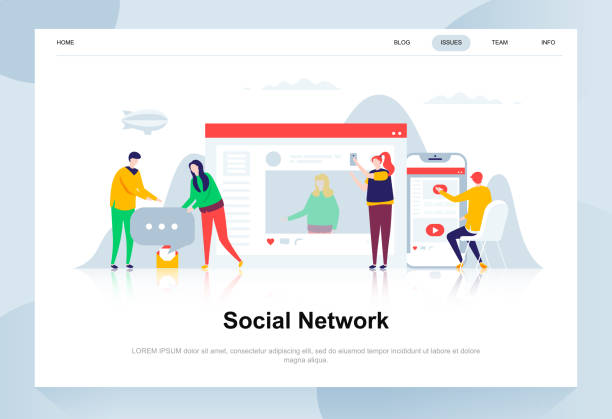
Content is king, and this principle applies more than anywhere else in online store design.
Producing high-quality content for products not only helps inform customers but also plays a vital role in Search Engine Optimization (SEO) and attracting organic traffic.
Product descriptions should be comprehensive, accurate, and persuasive.
They should highlight the product’s features and benefits and answer potential customer questions.
Using high-quality images and videos from various angles helps customers gain a better understanding of the product and improves their shopping experience.
This section explains and educates on the importance of content.
But content strategy is not limited to product descriptions.
Content marketing involves creating blog posts, articles, guides, and videos related to your industry and products.
This type of content can help you establish yourself as an authority in your field and attract targeted traffic to your store.
For example, if you have a clothing store, you can write articles about “seasonal clothing trends” or “how to choose the right clothes for every body type.”
This entertaining yet analytical approach encourages customers to constantly visit your site.
Also, thought-provoking content can increase user engagement.
For example, asking “What challenges do you face in choosing a product?” and answering them in the content.
Using relevant keywords in content helps search engines find your site and assign it a higher ranking.
Creating a content calendar and regularly planning content publication is key to success in this section.
Investing in quality content not only increases sales but also helps build a strong and sustainable brand.
This is a vital component in completing the process of successful online store design.
Search Engine Optimization for Increased Visibility
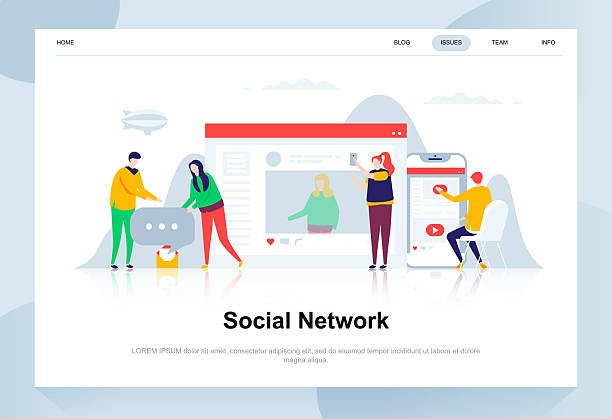
Designing an online store alone is not enough; you need to make sure potential customers can find your store.
This is where Search Engine Optimization (SEO) comes into play.
SEO is the process of improving your site’s ranking in the organic search results of Google and other search engines.
A strong SEO strategy includes keyword research, website content optimization, building quality internal and external links, and ensuring proper page loading speed.
For an online store, keywords related to products and categories are particularly important.
This section provides specialized and educational information.
The content of each product page should include relevant keywords, but not in a way that appears as “keyword stuffing.”
Meta Descriptions and Page Titles should be written to be both appealing and to include the main keywords.
The URL structure should also be user-friendly and readable.
Furthermore, site speed is a critical factor in SEO ranking; slow websites are penalized by search engines.
Using optimized images, caching, and CDN (Content Delivery Network) can help improve speed.
Internal linking between different pages of your store can also help search engines better understand the site’s structure.
External linking, meaning receiving links from other reputable websites, increases your site’s credibility and is an important ranking factor.
Continuous monitoring of SEO performance and performing regular analytical analyses to identify opportunities and problems is a vital part of this process.
An online store designed from the outset with SEO principles has a greater chance of being seen and attracting organic customers.
Security, Payment Gateways, and Order Management
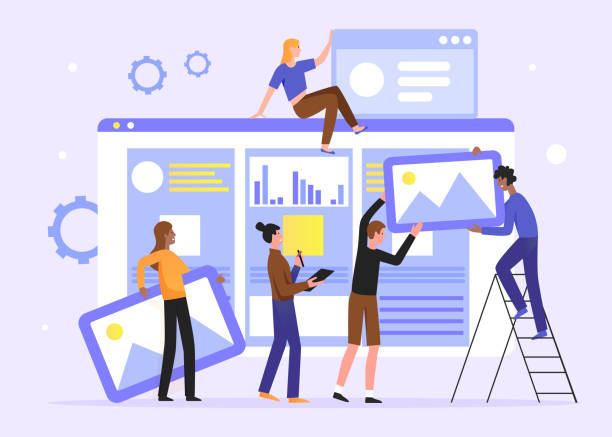
Security in online store design and e-commerce is of paramount importance.
Customers must be confident that their personal and financial information is protected throughout the purchase process.
Using an SSL (Secure Sockets Layer) certificate is essential for encrypting communications between the user’s browser and the website server.
This certificate shows customers that your site is secure and their information is protected (with a green lock icon in the browser’s address bar).
In addition to SSL, using a Web Application Firewall (WAF) and Intrusion Detection Systems can help protect against cyber attacks.
This section provides specialized and news-related information on the latest security standards.
Choosing and integrating secure and diverse payment gateways is also vital.
Customers expect to be able to make purchases using their preferred payment methods, whether credit card, e-wallet, or cash on delivery.
Seamless integration with popular payment gateways (such as Zarinpal, Parsian, Shaparak in Iran, or PayPal, Stripe internationally) helps increase conversion rates.
The order management system must also be efficient so you can easily track orders, update their status, and manage product shipments.
This system should include features such as inventory management, automatic invoicing, and customer notifications regarding order status.
Successful online store design requires special attention to these operational and security aspects, not only to build customer trust but also to streamline internal business processes.
This guiding and analytical approach ensures the smooth operation of your store.
The table below compares some common payment methods:
| Payment Gateway Type | Advantages | Disadvantages | Suitable for |
|---|---|---|---|
| Direct (Bank/Shaparak) | Low fees, more trust from domestic customers | Longer process for receipt, reliance on bank | Stores with high transaction volume and domestic customers |
| Intermediary (Zarinpal, IDPay) | Easy installation, strong support, multiple payment methods in one place | Higher fees, delayed settlement | Small and medium businesses, startups |
| E-wallet (PayPal, ZarinCard) | Speed and ease of payment, high security | Limited number of users, need to top up wallet | Young customers interested in new technologies |
Digital Marketing Strategies and Customer Acquisition
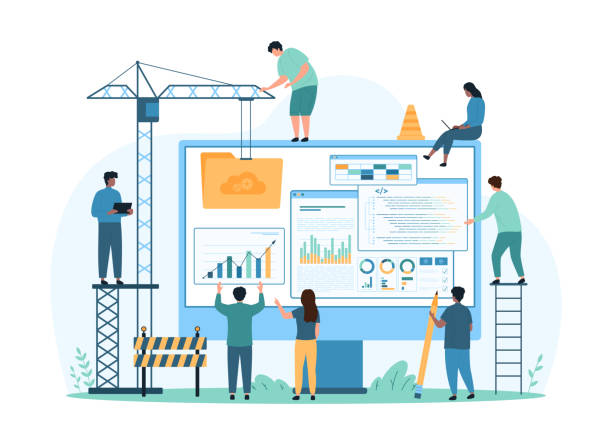
After completing online store design, the next step is attracting customers to it.
Digital marketing is a set of tactics that help you introduce your online store to your target audience.
This includes content marketing (as previously explained), social media marketing, PPC (Pay-Per-Click) advertising like Google Ads, email marketing, and affiliate marketing.
Each of these channels can drive targeted traffic to your website and help increase sales.
This section guides and entertainingly examines these strategies.
Advertising on social media networks like Instagram, Facebook, and Twitter allows you to reach a wide audience and introduce your products in a visual and engaging way.
PPC campaigns like Google Shopping are also very effective, as they display your products directly in search results and allow users to be directed straight to your product page.
Email marketing, by collecting customer email lists and sending newsletters, special offers, and updates, helps maintain communication with customers and encourages them to make repeat purchases.
Creating targeted and personalized email campaigns can significantly increase customer retention rates.
Additionally, holding contests and offering special discounts can help attract new customers and increase the loyalty of existing ones.
For an online store design, long-term success requires a dynamic and continuous digital marketing strategy that is regularly updated and optimized.
A deep understanding of customer behavior and using data to personalize marketing messages is key to success in this area.
This analytical and educational approach helps you implement successful strategies.
Did you know that poor online store design can scare away up to 70% of your potential customers? Rasaweb transforms your sales with professional and user-friendly e-commerce website designs.
✅ Significant increase in sales and revenue
✅ Full optimization for search engines and mobile devices
⚡ [Get a free consultation from Rasaweb]
Data Analysis and Continuous Performance Improvement

After launching and operating your online store, your work doesn’t end.
In fact, the important stage of data analysis and continuous performance improvement begins.
Tools like Google Analytics and Google Search Console provide valuable information about user behavior, traffic sources, conversion rates, and SEO performance.
Using this data, you can identify your store’s strengths and weaknesses and make data-driven decisions for its improvement.
This section provides analytical and educational information on how to use these tools.
You should regularly monitor Key Performance Indicators (KPIs) such as conversion rate, average order value, Bounce Rate, and user session duration.
Analyzing these metrics can show you which pages are performing well and which areas need optimization.
For example, if the bounce rate on product pages is high, you might need to improve images, descriptions, or the Call-to-Action button.
Performing A/B tests on various website elements (such as button colors, headings, or page layouts) can help you identify the best performance.
Customer feedback through surveys, emails, or online support is also a valuable source for improvement.
Over time, market trends and consumer behavior change, so flexibility and adaptability to changes are crucial.
This continuous optimization process ensures that your online store design remains up-to-date and efficient, reaching its maximum potential.
E-commerce website development is a living process that requires continuous attention and monitoring.
This is thought-provoking content and a specialized approach that helps you stay ahead of your competitors.
Future Trends and Innovation in E-commerce

The world of e-commerce is constantly changing and evolving.
Awareness of future trends helps you prepare your online store design for the future and maintain your competitive advantage.
One of the most important future trends is Artificial Intelligence (AI) and Machine Learning.
These technologies can be used for personalizing the shopping experience, recommending related products, customer support chatbots, and even optimizing pricing.
This section provides news and thought-provoking content: How can AI revolutionize your store?
Voice Commerce and Augmented Reality (AR) are also growing.
Shopping with voice commands through smart assistants and the ability to “virtually try on” products with AR (e.g., trying clothes on the body or placing furniture in a room before purchasing) can revolutionize the shopping experience.
Sustainability and corporate social responsibility have also become important factors for consumers; stores that emphasize these values are likely to attract more customer loyalty.
The increasing importance of Omnichannel Retailing also means providing a seamless shopping experience across all channels (online, physical, mobile, and social).
This means customers should be able to move seamlessly from one channel to another and have a consistent experience.
Finally, focusing on the speed and convenience of delivery, as well as providing excellent after-sales service, will always remain key success factors.
To maintain the dynamism and competitiveness of your online store, you should always seek innovation and adopt new technologies.
This is an entertaining and educational approach that helps you stay on top of the game.
Frequently Asked Questions
| Question | Answer |
|---|---|
| What is online store design? | It is the process of building and developing a website for buying and selling products or services online. |
| What features should an online store have? | Product management, shopping cart, online payment gateway, user account section, product search and filter capabilities. |
| What is the importance of User Experience (UX) in online store design? | Good user experience leads to easy navigation, a smooth purchasing process, and ultimately increased customer satisfaction and conversion rates. |
| Why is SEO important for an online store? | SEO helps your site rank higher in search engine results and attract more traffic, leading to increased sales. |
| What platforms are available for online store design? | Ready-made platforms like WordPress (with WooCommerce), Shopify, PrestaShop, and also the possibility of custom design are available. |
And other services of Rasaweb Advertising Agency in the field of advertising
Smart Digital Advertising: A professional solution for improving SEO ranking with a focus on Google Ads management.
Smart Data Analysis: A dedicated service for increasing website traffic based on intelligent data analysis.
Smart Sales Automation: An innovative service for increasing digital branding through user experience customization.
Smart Advertising Campaign: An innovative service for increasing website traffic through key page optimization.
Smart Conversion Rate Optimization: Designed for businesses looking to improve SEO ranking through precise audience targeting.
And over hundreds of other services in the field of internet advertising, advertising consulting, and organizational solutions
Internet Advertising | Advertising Strategy | Advertorial
Sources
Comprehensive Guide to Online Store DesignKey Tips for Online Store SuccessImportance of UI/UX in Online Store DesignHow to Start an Online Business?
? Are you ready to transform your business in the digital world? Rasaweb Afarin, with expertise in comprehensive digital marketing services including corporate website design, paves the way for your growth.
📍 Tehran, Mirdamad Street, Next to Central Bank, Kazeroun Jonoubi Alley, Ramin Alley No. 6
